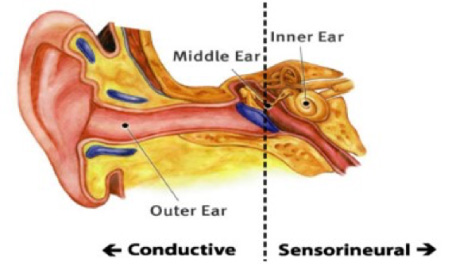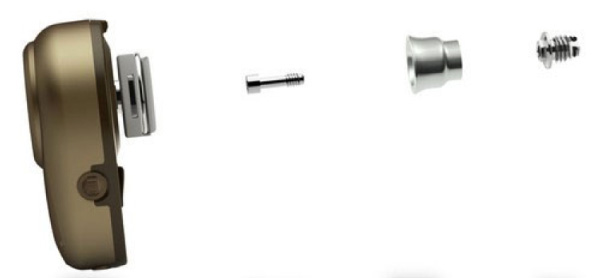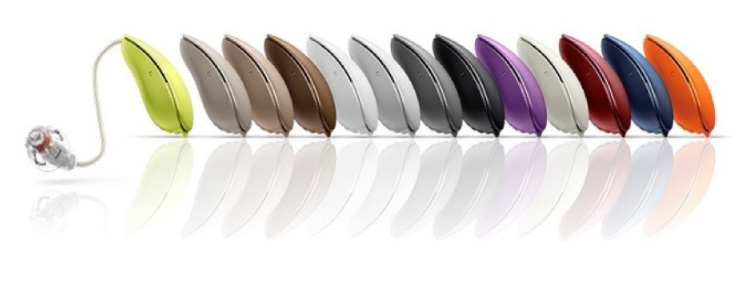

Most patients complain of difficulty hearing their spouse or family members, because he or she whispers. Or, they will complain of difficulty in loud noisy environments, such as communicating at dinner. Frequently, difficulty listening to the television or watching the television with the volume too loud will be the primary complaint. However, some patients don't even recognize their hearing loss and are referred by their family. Don't feel frustrated! These are common complaints, and they typically happen more frequently with age. Hearing loss can affect business, relationships, entertainment or daily communications. In my older patients, they can lead to isolation and fewer friendships.
You may have hearing loss and not be aware of it. People of all ages experience gradual hearing loss that may occur with aging or prolonged loud noise exposure. Many patients will complain of fullness or water in their ear, and they will not know that they actually have hearing loss.

Hearing loss comes in two varieties: sensorineural (nerve hearing loss) and conductive (transmission blockage). The treatment of these two types of hearing loss is very different. Hearing is a complex intricate process of transmission of sound down the ear canal toward the tympanic membrane (the ear drum) which then vibrates and conducts sound through the ear bones (ossicles) to the inner ear. There it is turned into electric signals at the cochlea and transmitted to the brain through the 8th cranial nerve. Blockage at the ear drum or ear bones is conductive hearing loss, and failure to transmit sound at the nerve is sensorineural hearing loss. Your audiologist will test these types of hearing loss and provide a roadmap for the ENT for the best way to improve your hearing.
Hearing loss that occurs at the nerve, or sensorineural hearing loss, is best treated with hearing aids. Occasionally, hearing loss is conductive and requires a surgical or medical therapy to improve your hearing. Dr. Timothy Kelsch can help diagnose the correct hearing loss and as well the appropriate treatment to help you regain your hearing!!

All hearing aids use similar parts and carry sound from the environment through a microphone and process this sound with an amplifier in order to create the sound most tailored to your hearing loss. This is then sent to your ear with a speaker powered by batteries. In recent years technology has advanced significantly to improve the size, sound compression, directionality and digitally unique spectrum required to improve your hearing.


A BAHA is a surgically implantable system used to treat hearing loss that works by the process of bone conduction. Bone conduction is the transfer of sound by vibration in the bones of the skull.
The microphone of the BAHA sound processor picks up sound from the surrounding environment and converts it to vibratory energy. The vibration signal is then sent to the titanium implant inserted into the bone. The bone conducts the sound vibrations to the functioning cochlea (Inner Ear). Once sound reaches the cochlea, the vibrations are converted into electrical impulses and sent to the brain, allowing the individual to perceive sound naturally.
A BAHA is approved by the FDA for certain individuals who have mixed hearing loss, conductive hearing loss or single-sided deafness with normal hearing in the other ear and who meet both audiological and surgical criteria.
You will schedule an appointment with a VENT surgeon who is trained in the BAHA Implantation. During the appointment, your hearing loss will be evaluated by a Doctor of Audiology. If you are a good candidate for the BAHA, you will have the opportunity to have it demonstrated in the office, as well as be educated about any other options that may be appropriate for your hearing loss. The physician will explain the surgical procedure as well as answer any questions you may have before proceeding with surgery.
The BAHA implant surgery is typically an outpatient procedure lasting about 1 hour. It is typically done under general anesthesia. Your surgeon will prepare a small area behind your ear for placement of the implant into bone. The exact placement of the implant varies depending on each patient's physical traits, and the particular implant being used. Approximately twelve weeks following your BAHA surgery, you will see the audiologist for the BAHA fitting. The audiologist will program the BAHA and go over use and care instructions.
Regardless of the cause, if you suffer from hearing loss you can feel secure that there is an instrument to suit you. Today there are many options to consider and a number of styles and models available, solutions that will best meet your budget and your situation.
The cost range of hearing aids is as wide as the products available. What will suit you depends on the extent of your hearing loss, the style you prefer, and the technology it features.
Cost also varies depending on the brand and provider. Newer models rely on more advanced forms of technology for optimal hearing and such improvements come at a cost. As a consumer, you will need to decide what instrument you want based on your own very individual needs, circumstances and of course on your budget.
When determining your budget, it is worth considering what you need and want your hearing solution to do for you. This could be based on your life style and expectations but also how active you are. It is also worth considering how much you want to invest in your hearing and how important it is to be able to participate fully in the world around you.
You deserve to hear the best you can and a hearing solution can add value to your experiences. Imagine being able to enjoy an active everyday life at work, when eating out, going on holidays and participating in social gatherings and family occasions without the worry of missing out. Why should you compromise on your hearing when hearing gives you access to the world around you, allowing you to get the best out of life?
There are hearing solutions for everyone. From very reliable, discreet solutions with great sound performance, to those that feature the latest technological breakthroughs with optimal functionality and the opportunity to connect fully to modern electronic technology.

We understand how your ears and your brain work together as a system, with your brain doing the heavy lifting. Oticon hearing instruments with BrainHearingTM technology are designed for your brain, supporting the hard work it does. Super small, they fit invisibly in your ear canal or tuck discreetly behind your ear. BrainHearing technology enables them to be minutely tuned to match your unique hearing profile and personal sound preferences. Then deliver sound with the clearest, purest signal possible in the way your brain is best able to understand it. So you hear better, with less effort. Anywhere. Anytime.
Copyright © 2025
Website by Red Advertising